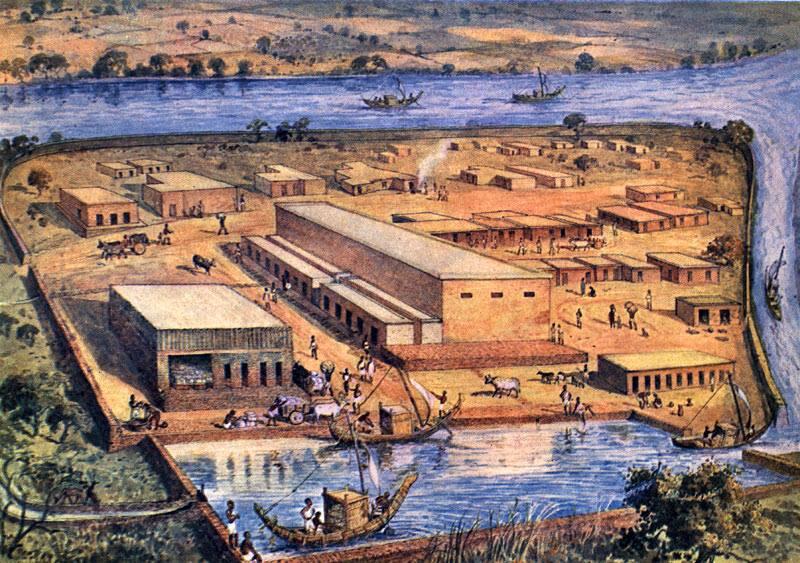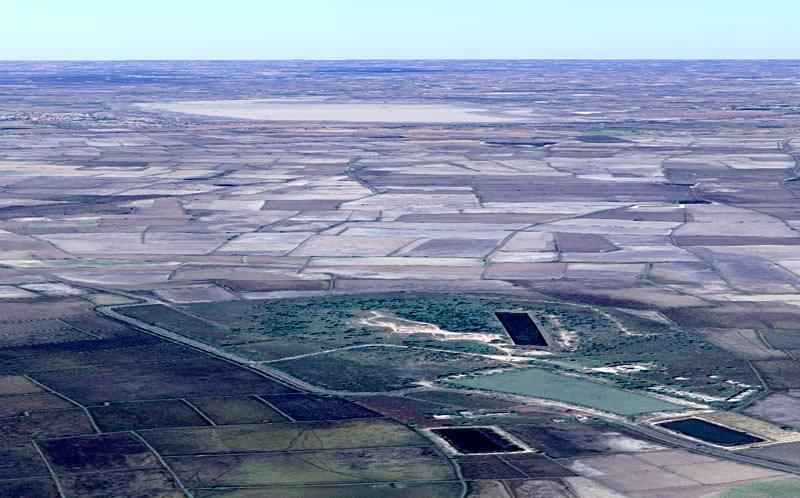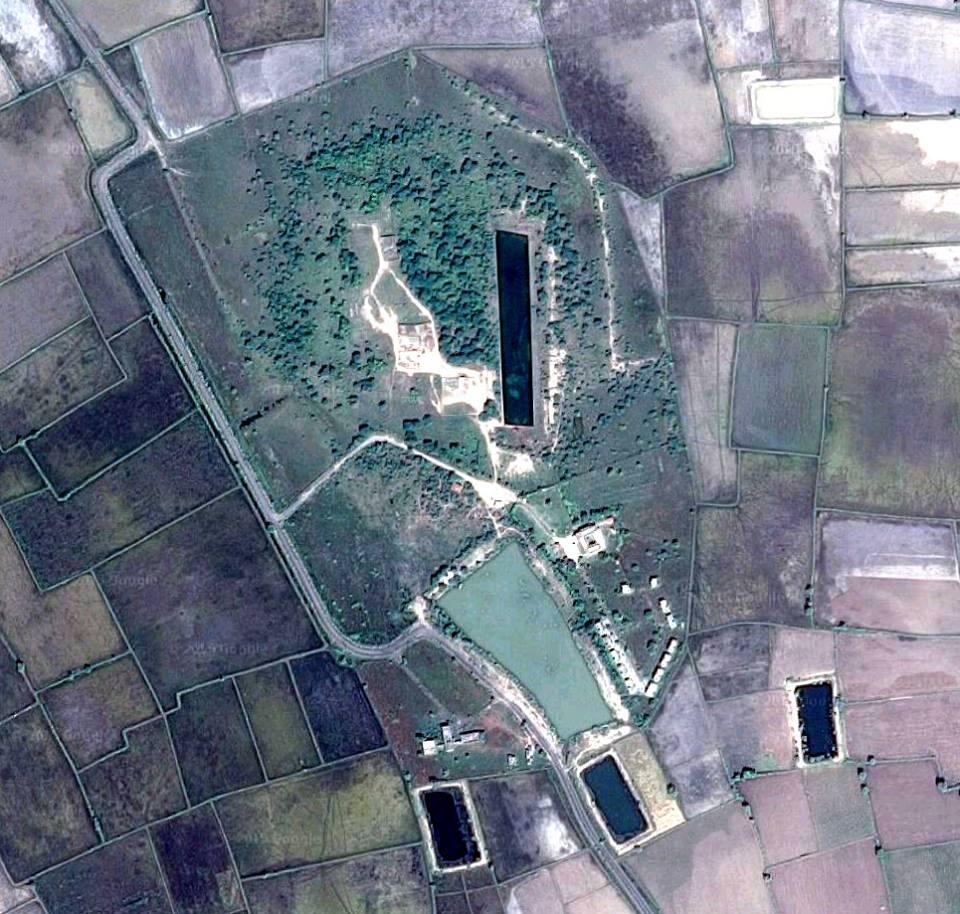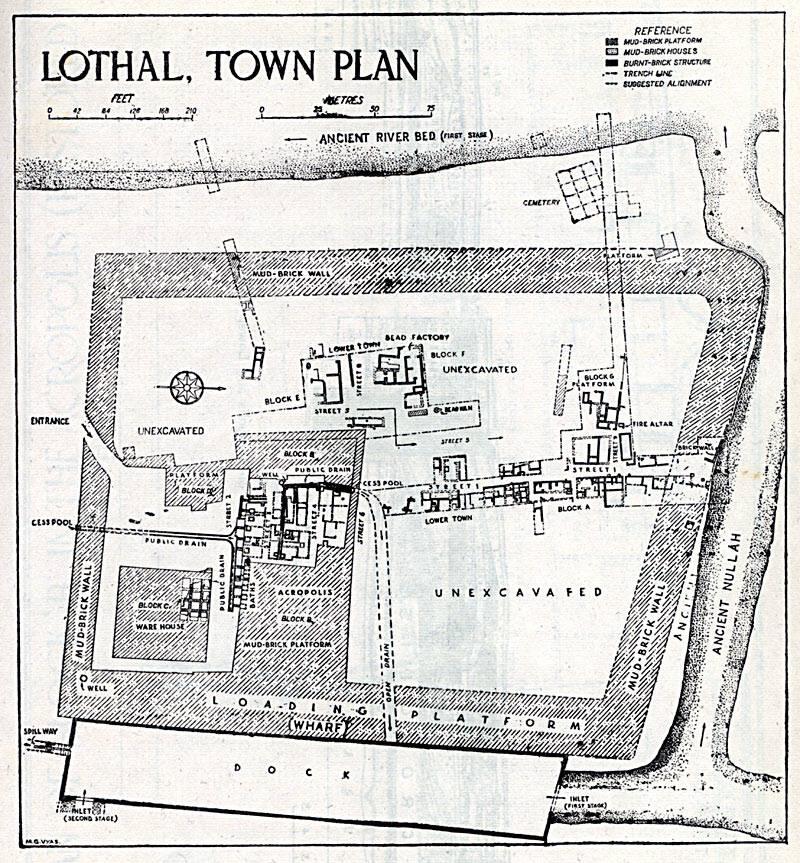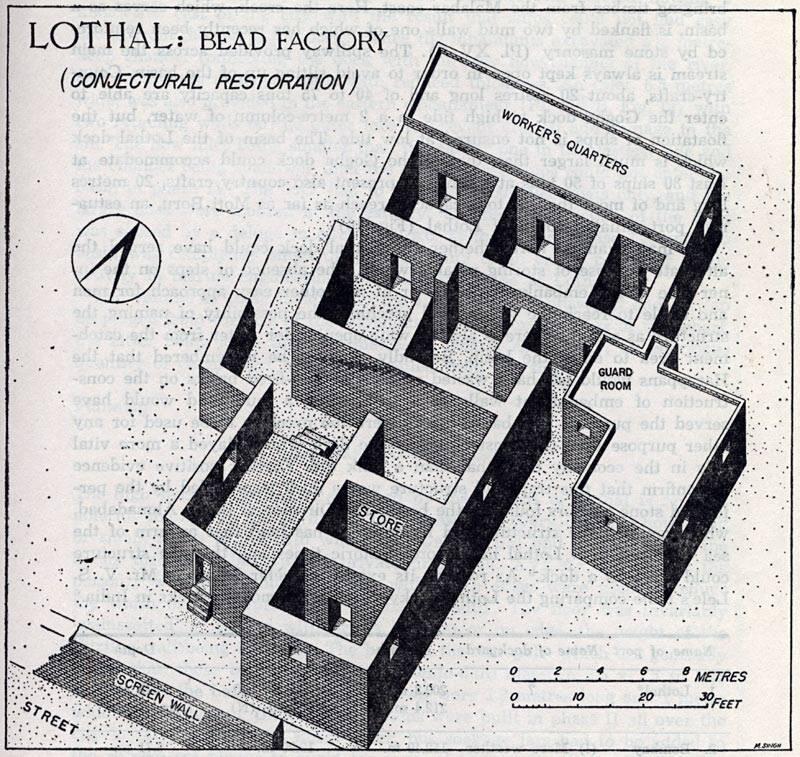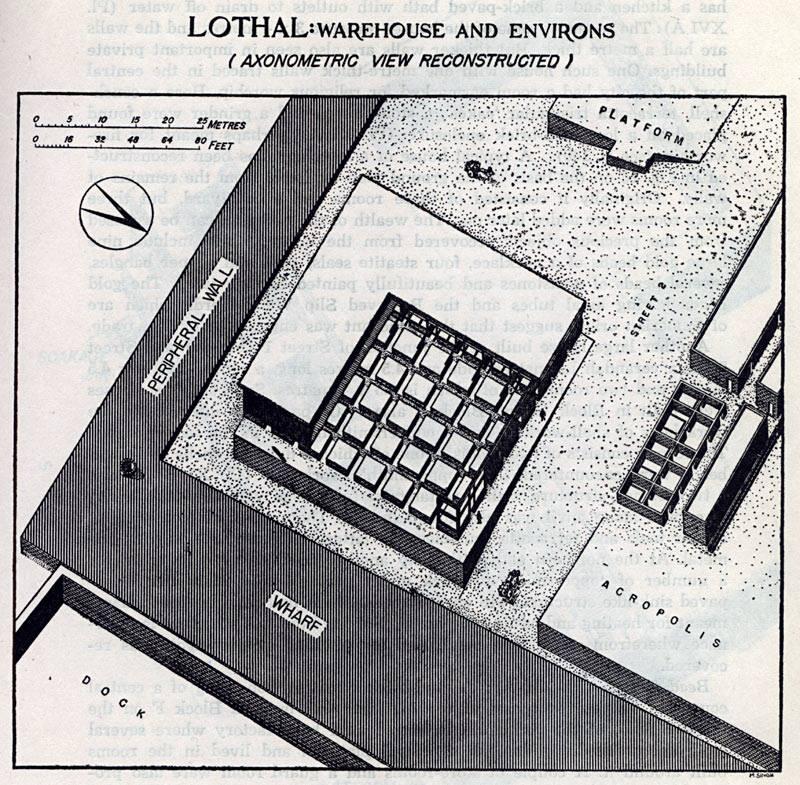By StephanieV. March 24th, 2015
A reimagining of life in Lothal 4,000 years ago, satellite images of the town in context of today's landscape, and the discoverer, S. R. Rao's drawings of the town plan, bead factory and warehouse. "While exploring the Sabarmati estuary an ancient mound presently known as Lothal was discovered in November, 1954," wrote S. R. Rao. "The excavation conducted here during the following seven years has brought to light the existence of a flourishing port-city of the Indus Civilization with an excellent brick-built dock and nearly laid-out streets. One comes across at Lothal the same regimentation in town planning, the same sophisticated system of public sanitation, the use of the same types of metal tools and lithic implements, the adoption of the same pictographic writing ons tone-cut seals ad the prevalence of the same artistic traditions as are noticed in the Indus cities. But underlying this homogeneity certain regional variations sufficiently indicative of originality of ideas are becoming increasingly clear from the excavations at Lothal, Rangpur and other Harappan sites in Kathiawar." (S.R. Rao, Lothal and the Indus Civilization, 1973, p. 2).
See also A Walk Through Lothal.

